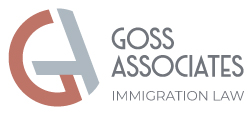Update 2/8/2021:
From mid-March – June 2020, due to the clear threat of the COVID-19 pandemic USCIS suspended all in person services including biometrics appointments out of concern about the health of its employees and applicants. Biometric services were not restored until July, which naturally created a significant backlog of appointments that needed to be scheduled. USCIS has since faltered in its progress on this backlog as wait times for biometrics appointments have continued to increase from 4-6 weeks to unpredictable lengths. The agency has further disclosed that “From July to September, ASCs were operating at below 50 percent of pre-COVID levels. By late October, we increased ASC operations to approximately 65 percent of pre-COVID levels.”
Since the reopening of Application Support Centers (ASCs), the facilities USCIS uses to collect biometrics, the agency has no longer allowed local changes to biometrics appointments due to public health concerns (except for those for persons serving in the American military). There is limited transparency on ASCs opening and closings as they navigate a patchwork of “local stay-at-home orders, COVID-19-related cleaning and extreme weather”. Despite the official reopening of all ASCs, there are still periods, sometimes lasting several weeks, when certain ASCs schedule few if any appointments.
Additionally, current events may drive an occasional announcement of suspension of in-person services on days when appointments are scheduled. These may be posted on social media or USCIS’ website, but they are often not directly communicated in a timely manner. A national suspension of in person services was announced on January 15 for the days January 19-20 in observance of Martin Luther King Jr. Day and Inauguration Day and for the safety of its officers and applicants. USCIS took this action despite most government security resources being concentrated in Washington DC, around state capitol buildings, and on commercial passenger air travel during that time.
At present USCIS states they “schedule” approximately 10,400 appointments per day. According to their public engagement division around 1.3 million applications were awaiting biometrics appointments in mid-December 2020. However, the methodology for this data is unclear, and it is possible the backlog has since grown significantly due to the large number of green card applications filed in October.
We have noticed that some clients who receive action on their EAD/AP prior to their biometrics appointment are first sent a Request for Evidence (RFE) asking them to submit photos. We are unsure whether these RFEs are sent because USCIS legitimately lost the photos we submitted with the application or as a delaying tactic by the Service Centers in the hope that biometrics will be collected by the time the RFE is responded to. Clients who have responded to these RFEs usually receive EAD/AP approval within 2-4 weeks independent of the biometrics appointment notice. However, most employment-based green card applications currently take longer to process than family-based applications, so these persons have the disadvantage of longer wait-times to receive an actual green card.
A USCIS lockbox is a facility where petitions sent to the agency via mail have their checks cashed and then are scanned and sent to the Service Centers for adjudication. USCIS currently only accepts mailed applications for the majority of its processes. The lockbox facilities were set up to perform large scale basic initial filings processing.
In late September USCIS announced that Fiscal Year 2020 immigrant visa numbers were underutilized, due in part to the Trump Administrations Executive Orders barring issuance of Immigrant Visas (Green cards) for applicants waiting overseas as well as an internal slowdown of green card processing in the US because of forced office closings due to COVID. Therefore, the line for applicants waiting for a chance to file the last stage of their green cards progressed several years making a larger number of foreign nationals born in China and India who have been subject to 7-10+ year waits, to become eligible to file. For example, Indian-born nationals with petitions filed under the EB-3 category filed on or before January 1, 2015 became eligible to file. In September 2020 USCIS was only allowed to accept applications, filed on or before February 1, 2010.
The expectation among most immigration law firms including Goss Associates that this would occur in November created a rush to file in the month of October. USCIS required that all AOS applications be sent to one of two lockboxes depending on the state an applicant resided in, and any AOS application with an amendment to the underlying petition, such as ones to reclassify persons to the EB-3 category, be sent to the Dallas Lockbox. As a result, both lockboxes were flooded with applications, resulting in significant delays in USCIS acknowledging receipt of these applications.
USCIS has acknowledged these significant delays in multiple statements, underscoring the application rush and COVID-19 health protocols at the lockboxes as the reason for delay. Currently USCIS is processing receipts for cases up to and before November 2, 2020. Several hundred thousand applications are still waiting to be processed at the lockbox. Therefore, we anticipate delays will remain.
On January 8, USCIS announced significant changes to which lockboxes would accept employment-based applications including requiring the filing of certain petitions at the Chicago Lockbox, which generally does not handle employment-based immigration applications.
Goss Associates is monitoring the situation at the Lock box facilities and will continue to provide updates. As always, we encourage timely filings of applications.
“For those few who nevertheless chose to pursue entrepreneurship in the United States via the IER, the application process was grueling. Attorney Elizabeth Goss, one of the few immigration lawyers in the country who had a client approved for IER parole thus far, notes that many of the difficulties she faced during the application process were likely related to the unfamiliarity DHS had with implementing the rule.”
Check out this article on the International Entrepreneur Rule highlighting our own Liz Goss.
Read more…
